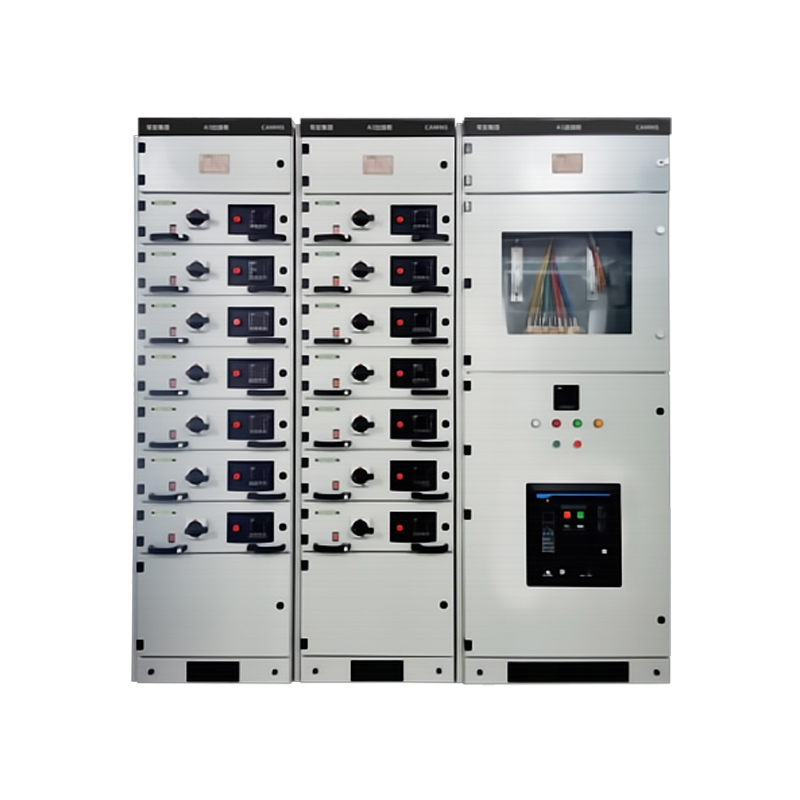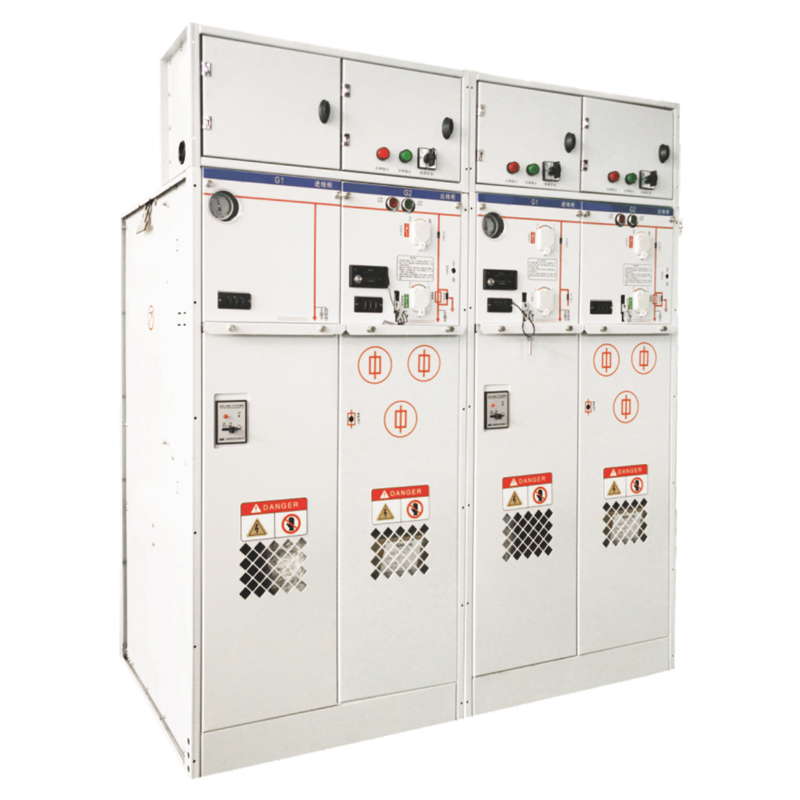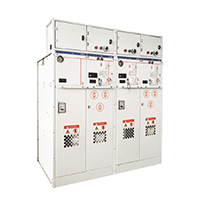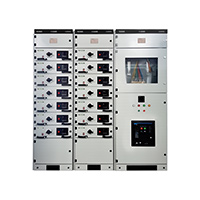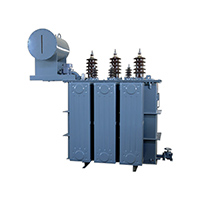Understanding the Importance and Functionality of Low Voltage Switchgear

 by changan electric
by changan electricUnderstanding the role of Low Voltage Switchgearin electrical systems is essential for ensuring safety and efficiency. These systems help manage and distribute electrical power effectively, minimizing risks like overloads and equipment failure.
Key features such as advanced monitoring capabilities and safety mechanisms contribute to high operational reliability. Additionally, low voltage switchgearsupports various applications, from industrial settings to residential smart homes, highlighting its versatility.
The Role of Low Voltage Switchgear in Modern Electrical Systems
These systems are designed to manage the electrical supply for residential, commercial, and industrial applications. One key aspect of low voltage switchgearis its ability to protect circuits from overloads and faults, ensuring operational safety.
Moreover, they facilitate the seamless integration of renewable energy sources into existing electrical grids. As buildings increasingly adopt smart technology for enhanced energy management, low voltage switchgearbecomes essential for optimizing performance and reliability.
By ensuring compatibility with a variety of devices, low voltage switchgearsupports diverse applications, making it an integral part of modern electrical infrastructure. Its functionalities directly impact energy management strategies and overall system performance.
Key Features and Benefits of Low Voltage Switchgear
One of its main features is the ability to manage and distribute electricity safely within preset voltage limits, typically below 1,000 volts. This adaptability ensures that electrical systems operate smoothly, reducing the risk of overloading and equipment failure.
The benefits of using Low Voltage Switchgearinclude enhanced safety, improved operational efficiency, and increased reliability. For instance, its design allows for easy maintenance and quick troubleshooting, which minimizes downtime during operation. Additionally, these switchgears include protective devices that prevent damage from faults or overloads.
|
Feature |
Benefit |
|
Safety Mechanisms |
Reduces risk of electrical accidents |
|
Compact Design |
Saves space in installations |
|
Advanced Monitoring Capabilities |
Enables real-time assessment |
|
Flexibility in Configuration |
Adapts to different system needs |
Overall, the integration of Low Voltage Switchgearcontributes significantly to the efficiency and safety of modern electrical systems.
How Low Voltage Switchgear Enhances Safety in Power Distribution
-
Fault Prevention: Provides effective isolation and protection to prevent electrical faults and reduce fire hazards.
-
Circuit Protection: Automatically disconnects circuits during overloads via integrated breakers and fuses.
-
Live Component Safety: Designed with features to minimize accidental contact with energized parts.
-
Real-Time Monitoring: Enables continuous tracking of electrical parameters for rapid response to abnormalities.
-
System Reliability: Ensures proper grounding and reliable fault detection to enhance operational safety in power networks.
Efficiency Improvements Through Low Voltage Switchgear Integration
The integration of Low Voltage Switchgearinto electrical systems leads to significant efficiency improvements. By enabling better control of electricity flow, these systems reduce energy losses during distribution.
-
Automated Load Balancing: Dynamically adjusts electrical loads to optimize performance.
-
Real-Time Monitoring: Enables timely interventions to correct inefficiencies.
-
Solid-State Technology: Ensures equipment operates at optimal efficiency levels.
-
Streamlined Power Management: Facilitates rapid identification and resolution of system inefficiencies.
-
Cost Reduction: Lowers operational expenses through improved energy utilization.
The cohesive design of modern Low Voltage Switchgearsupports seamless integration into existing infrastructure, maximizing return on investment while ensuring reliable power distribution.
Understanding Power Management with Low Voltage Switchgear
Effective power management is crucial for the seamless operation of power systems.It regulates and controls the flow of electrical power, helping to maintain balanced loads and prevent overload situations. By utilizing advanced technology, low voltage switchgear ensures optimal performance through features such as circuit protection and switching capabilities. Moreover, the integration of modern low voltage switchgearenhances real-time monitoring and diagnostics, allowing for quick adjustments to power distribution.
This adaptability not only improves operational efficiency but also minimizes downtime, making it an integral part of modern electrical infrastructure.
The Importance of Reliability in Low Voltage Switchgear Design
Reliability is a cornerstone in the design of low voltage switchgear, as it directly impacts the performance and safety of electrical systems. A reliable switchgear ensures consistent operation, minimizing the risk of failures that could lead to costly downtime or hazardous situations.
Factors such as robust construction, high-quality materials, and rigorous testing protocols play a crucial role in enhancing this reliability. Moreover, low voltage switchgearmust be engineered to withstand various environmental conditions and operational stresses, ensuring it can perform efficiently under all circumstances.
As electrical systems become more complex, the need for dependable switchgear becomes even more critical. The integration of smart technologies also supports enhanced monitoring and diagnostics, allowing for proactive maintenance that further underscores the importance of reliability in overall system performance.
Common Applications and Use Cases for Low Voltage Switchgear
- In industrial environments, switchgear regulates and protects motor circuits, ensuring smooth operation of machinery.
- In commercial buildings, it controls power distribution, managing loads for HVAC systems and lighting effectively.
- Residential applications often include integration into smart home systems, where it enhances safety by providing circuit protection and facilitating energy management.
- Renewable energy systems, such as solar power installations, rely on low voltage switchgear to manage the flow of electricity safely and efficiently.
Each application highlights the versatility and significance of low voltage switchgear in maintaining safe and reliable power distribution across diverse environments.
Choosing the Right Low Voltage Switchgear for Your Needs
Begin by evaluating the current ratingsand short circuit withstandcapacities needed for your application. Consider whether flexibility and modularity are important, as some switchgear types allow for easier upgrades and expansions. Additionally, review safety features, such as protection relaysand circuit integrity, which can greatly influence overall system reliability. It's also wise to factor in the space availability for installation, ensuring that the chosen switchgear fits within your designated area without compromising performance.
Consulting with professionals or industry-experts can further enhance your decision-making process, ensuring you choose a solution that best meets your operational needs.
Conclusion
In conclusion, the significance of Low Voltage Switchgearin electrical systems cannot be overstated. It serves as a pivotal element for safety and efficiency in power distribution. By effectively managing electricity flow and implementing protective mechanisms, low voltage switchgearminimizes operational risks while enhancing reliability. Its ability to support various applications and adapt to emerging technologies illustrates how indispensable it is in modern infrastructure. Investing in quality low voltage switchgearultimately leads to improved operational performance and long-term sustainability, making it an essential component for any electrical setup.
Act now!
Contact our customer service team for free shopping guides and the latest product catalogs!


